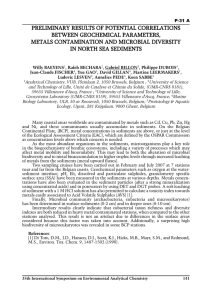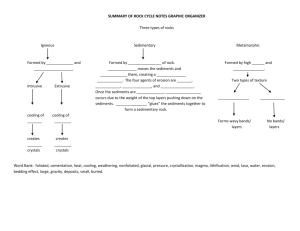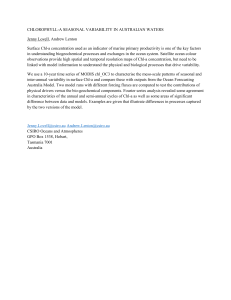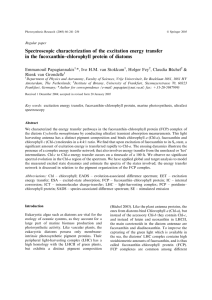Suykens Kim, Bruno Delille and Alberto v. Borges
advertisement
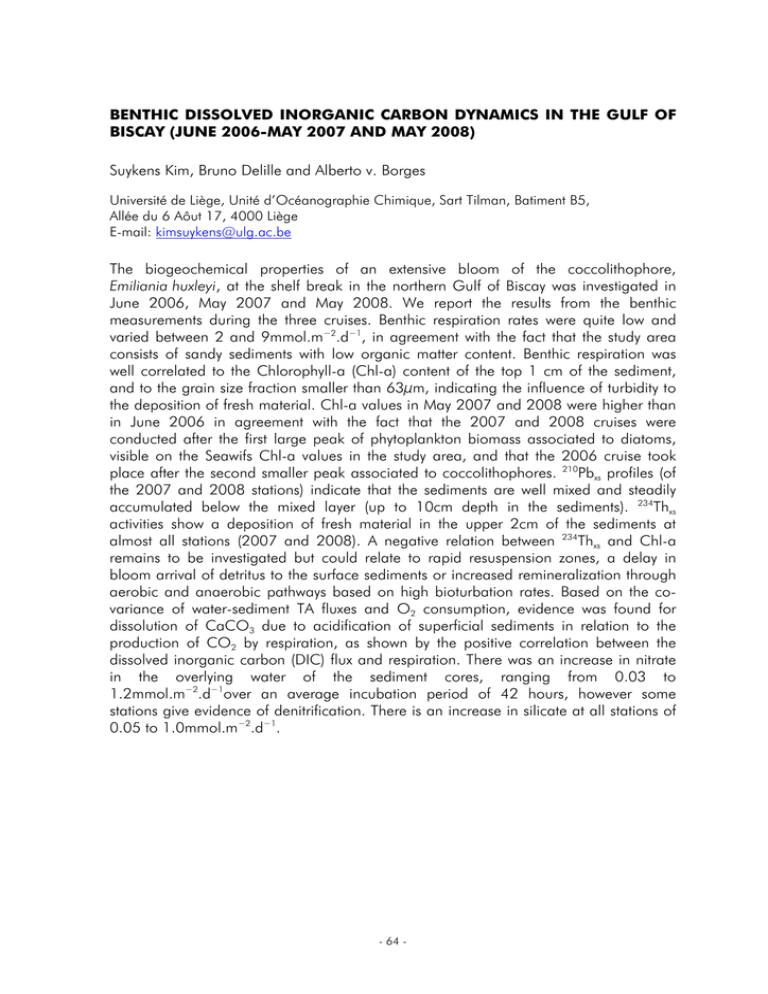
BENTHIC DISSOLVED INORGANIC CARBON DYNAMICS IN THE GULF OF BISCAY (JUNE 2006-MAY 2007 AND MAY 2008) Suykens Kim, Bruno Delille and Alberto v. Borges Université de Liège, Unité d’Océanographie Chimique, Sart Tilman, Batiment B5, Allée du 6 Aôut 17, 4000 Liège E-mail: kimsuykens@ulg.ac.be The biogeochemical properties of an extensive bloom of the coccolithophore, Emiliania huxleyi, at the shelf break in the northern Gulf of Biscay was investigated in June 2006, May 2007 and May 2008. We report the results from the benthic measurements during the three cruises. Benthic respiration rates were quite low and varied between 2 and 9mmol.m−2.d−1, in agreement with the fact that the study area consists of sandy sediments with low organic matter content. Benthic respiration was well correlated to the Chlorophyll-a (Chl-a) content of the top 1 cm of the sediment, and to the grain size fraction smaller than 63μm, indicating the influence of turbidity to the deposition of fresh material. Chl-a values in May 2007 and 2008 were higher than in June 2006 in agreement with the fact that the 2007 and 2008 cruises were conducted after the first large peak of phytoplankton biomass associated to diatoms, visible on the Seawifs Chl-a values in the study area, and that the 2006 cruise took place after the second smaller peak associated to coccolithophores. 210Pbxs profiles (of the 2007 and 2008 stations) indicate that the sediments are well mixed and steadily accumulated below the mixed layer (up to 10cm depth in the sediments). 234Thxs activities show a deposition of fresh material in the upper 2cm of the sediments at almost all stations (2007 and 2008). A negative relation between 234Thxs and Chl-a remains to be investigated but could relate to rapid resuspension zones, a delay in bloom arrival of detritus to the surface sediments or increased remineralization through aerobic and anaerobic pathways based on high bioturbation rates. Based on the covariance of water-sediment TA fluxes and O2 consumption, evidence was found for dissolution of CaCO3 due to acidification of superficial sediments in relation to the production of CO2 by respiration, as shown by the positive correlation between the dissolved inorganic carbon (DIC) flux and respiration. There was an increase in nitrate in the overlying water of the sediment cores, ranging from 0.03 to 1.2mmol.m−2.d−1over an average incubation period of 42 hours, however some stations give evidence of denitrification. There is an increase in silicate at all stations of 0.05 to 1.0mmol.m−2.d−1. - 64 -

